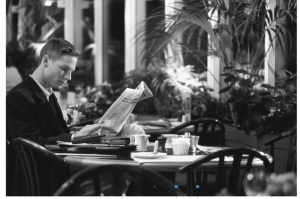8Way Thinking Questions for Describing photos in Cambridge English: Preliminary Speaking
In many ways, the describe-the-photo-task in the Cambridge English: Preliminary Speaking Test is probably one of the most difficult tasks of any of the speaking tests in the Cambridge English Language Assessment exams. Finding enough things to say about a picture that might not inspire you in an exam situation is not easy. A minute can seem like an eternity!
Today, I’m going to share an activity for helping students use their imagination to describe photos. It trains them to ‘see’ a photo in different ways, using their senses and intelligences.
I came across 8Way Thinking when I was preparing my session for the 2016 ACEIA Conference in Seville. It is based on Howard Gardner’s multiple intelligences.
To read about it in action, I would highly recommend reading Ian Gilbert’s description of his 8Way Thinking in his article about a three month project: About Deeply.
https://independentthinkingblog.files.wordpress.com/2011/05/8-way-thinking-article.pdf
Ian Gilbert took Howard Garner’s Multiple Intelligences and simplified the words for concepts like ‘verbal/linguistic’ and ‘visual/spatial’: People, Numbers, Words, Nature, Sounds, Feelings, Sights, Actions.
When he applies his 8Way questions to the town of Grimsby, your imagination and thinking immediately kicks into action.
How many dockworkers were there in its heyday?
What local accents and dialects can be found here?
What species of birds and wildlife live here?
As Gilbert says, you can use 8Way Thinking…. “for anything in the world you want to think about, (dogs, love, cheese, Manchester United, weather, the Egyptians, the rainforests and yes, even Grimsby), you have a model for asking questions, curiosity, thinking deeply and seeing with new eyes.”
Back to describing photos for the Preliminary Speaking Test!
I showed the black and white photograph from the Cambridge English: Preliminary Handbook (page 45)
Handbook available here:http://www.cambridge-exams-sg.ch/117693_Cambridge_English_Preliminary__PET__Handbook.pdf
Then, I gave the people at my ACEIA session a partly-completed 8Way Thinking octahedron.
And I asked the teachers there to write the questions for this picture to ask about numbers and sounds. And suggested that they shared their versions in tweets. One teacher (Teresa Bestwick – from Views from the Whiteboard) very kindly tweeted her 8Way questions after the Conference. Thanks so much Teresa!
Really enjoyed @teachtog's #ACEIA session, especially 8 Way Thinking. Great for getting students to be creative and imaginative 🙂 pic.twitter.com/jUeJmZLf1P
— Teresa Bestwick (@TeresaBestwick) November 13, 2016
I think you’ll agree that these questions encourage us to look at this black and white photograph in a different way – or rather – in lots of different ways. We don’t just see it – we hear it and feel it and imagine ourself in the situation.
If we train our students to apply 8Way Thinking to images and situations, then I’m sure that they’ll have more things to say in speaking tests and they can also use this to improve their stories and other writing.
You can find lots of posts on the internet where other teachers have shared their projects using 8Way Thinking. It can be applied to any subject at any level.
And for a blank 8Way Thinking template to use with other photos, use page 4 of Ian Gilbert’s article.
I’d love to hear from you if you try out 8Way Thinking for working on the Cambridge English: Preliminary photo task!


